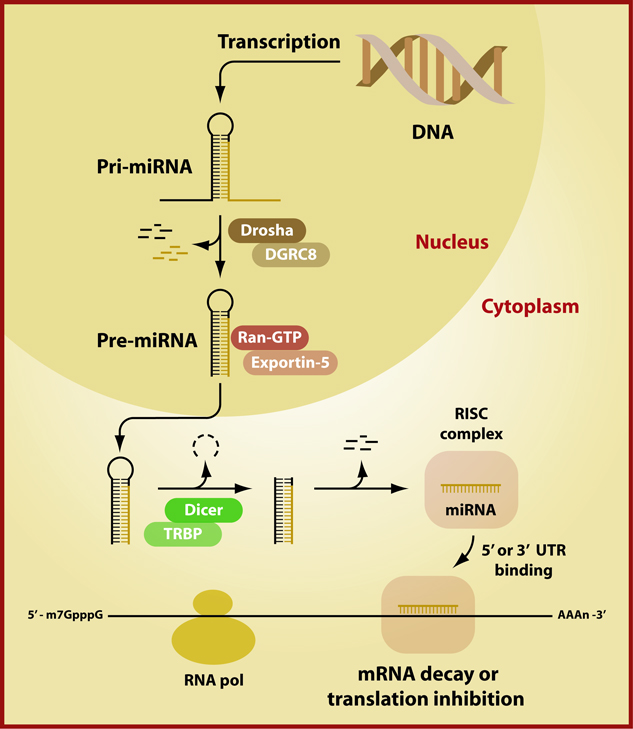Figure 1.
miRNA Biogenesis: miRNA are transcribed as a large primary (pri)-miRNA which are approximately 100 nucleotides (nt) in length. Pri-miRNAs are bound to double-stranded RNA-binding domain (dsRBD) protein. In invertebrates, Pasha or Partner of Drosha, while in humans DiGeorge syndrome critical region gene 8 (DGCR8) binds to the pri-miRNA. DGCR8, the pri-miRNA and a universal RNase III endonuclease, RNASEN, (Drosha in invertebrates) facilitates the processing of the pri-miRNA to a smaller ~70 nt precursor miRNA (pre-miRNA) molecules These are then transported to the cytoplasm by the nuclear transmembrane Ran GTP-dependent transported Exportin 5. Once in the cytoplasm, a pre-miRNA processing complex containing a second RNase III endonuclease, Dicer, and a transactivating response RNA-binding protein (TRBP) is formed to cleave the pre-miRNA to double stranded ~22 nt miRNA molecules. The miRNA is then separated into two single stranded molecules; the anti-sense strand is incorporated in the RNA-induced silencing complex (RISC) through its interaction with Argonaute (AGO) proteins, while the other strand is degraded. Ago proteins bind to the 3´ end of the RNA and serve to align and stabilize the miRNA:mRNA duplex. The mature miRNA then targets either the 5’ or 3’UTR based on complimentartity

